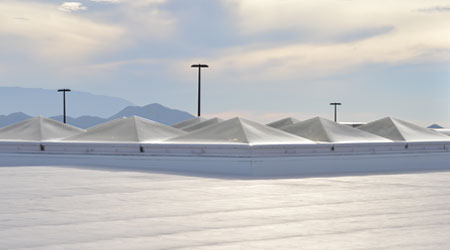How Cool Walls Help Whole-Building Energy Efficiency
In addition to roofing, when building wall systems also have high reflectivity and emissivity, the result is a much more efficient building overall.
The roof isn’t the only part of the building exterior where reflective and emissive materials can help cut energy demand.
Ronnen Levinson, staff scientist and leader of the Heat Island Group at Lawrence Berkeley National Laboratory, has advocated for cool walls in addition to cool roofing.
He notes that most of the building stock in the United states was constructed before the 1970s, and that it’s during the 1970s that the first building energy efficiency codes come into use.
Levinson published a paper in a recent volume of Energy and Buildings, noting: “Past and current U.S. building energy codes prescribe more insulation in roofs than in walls. Therefore, code-compliant walls provide less resistance to heat flow across the envelope than do code-compliant roofs.”
He has therefore advocated that building walls also have albedo and emissivity characteristics akin to cool roofing.
The logic behind increased use of cool walls is best understood when considering multi-story buildings particularly found in urban locations.
“In multi-floor buildings, a cool roof affects the HVAC energy use of only the top floor while cool walls influence the HVAC energy use of every above-grade floor. Thus all else being equal, we expect cooling savings and heating penalties from cool walls to be greater than those from a cool roof when the building has a low ratio of roof area to net wall area.”
Levinson’s data backs up this supposition. His team created code-compliant building prototypes representing three vintages of 10 categories of buildings. They used the energy-use simulation program EnergyPlus to model heating and cooling demands across all U.S. climate zones.
In nearly all climate zones, particularly for the “medium office” building type that was built before 1980, cool walls helped lower total energy use as much or more than cool roofing did.
Loren Snyder, a contributing editor for Building Operating Management, is a writer who specializes in facility issues. He was formerly managing editor of Building Operating Management.
Email comments and questions to edward.sullivan@tradepress.com.
Related Topics:










